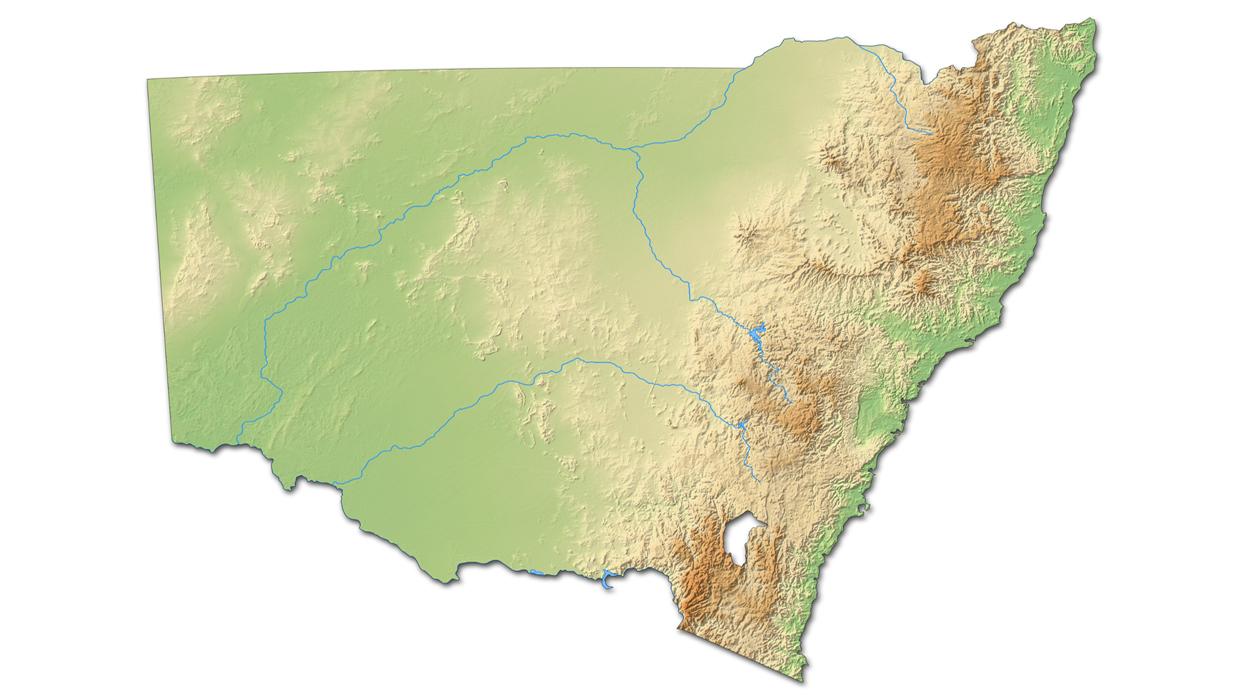
The following is a report on the Australian state of New South Wales, by MFAT. The original is here.
New South Wales (NSW) is Australia’s largest State by population and economy, and home to the second largest New Zealand expatriate population globally. NSW’s economy is resilient but faces challenges that will be familiar to New Zealand including the cost-of-living, housing affordability, sluggish per-capita economic growth and labour shortages. This report draws on recent discussions with NSW economic stakeholders, and on the NSW Government’s Half-Yearly Budget Review for 2023/24.
A resilient economy…
Stakeholders we spoke to painted a consistent picture of a “resilient” NSW economy, characterised by steady (but not spectacular) economic growth, a rapidly increasing population and a strong labour market.
Key economic indicators include:
| 2022/23 | 2023/24 | 2024/25 | 2025/26 | |
|---|---|---|---|---|
| Real GSP growth1 | 3.7% | 1.5% | 1.25% | 2.0% |
| Population increase | 2.0% | 1.7% | 1.3% | 1.3% |
| Unemployment rate | 3.1% | 3.75% | 4.5% | 2.75% |
| Sydney CPI | 7.1% | 4.5% | 3.25% | 2.75% |
…but not without its challenges
The immediate challenges facing the NSW economy include the cost-of-living, housing affordability, per-capita economic growth, and labour shortages.
According to political polls, the cost-of-living is the issue of most concern to voters in NSW. The NSW Labor Government has sought to address this by providing targeted financial assistance to households (including for energy costs and road tolls) and increasing the pay of essential government workers such as teachers and nurses.2 But there is a limit to what it can do to off-set the impact of rising house prices, rents and mortgage rates.3
Housing affordability is now the most pressing issue facing the NSW Government, both politically and economically. For at least two decades, the supply of housing has not kept pace with immigration-driven population growth, particularly in Sydney. As a consequence of this:
- Sydney is now ranked as the third-least affordable city in the Asia-Pacific region, after Hong Kong and Singapore.
- There is an estimated shortfall of 100,000 dwellings in Sydney (population 5.3 million).
- In 2000, the median dwelling in Greater Sydney sold for around 6.5 times a mid-career teacher’s salary. By 2022, this had risen to 14 times.
- For every person aged between 30 and 40 years who moves to Sydney, two leave (mostly to other Australian States, such as Queensland, where housing affordability is a less acute issue).
The projected growth in NSW’s Real Gross State Product (GSP) over the next three years is unlikely to provide much relief for financially stressed households because it will be driven primarily by “surging net overseas migration” - which means that GSP per person is expected to remain “broadly flat” for the next two years.
While the unemployment rate in NSW is projected to increase to (and peak at) 4.5% in 2025, all of our economic contacts stressed that the labour market will remain tight for some years to come, particularly in areas such as teaching, health care, aged care, construction and renewable energy.
Leading the NSW Government to tighten its belt:
The NSW Labor Government campaigned for the March 2023 election (at which it defeated the incumbent Liberal-National Coalition Government) on a platform of fiscal consolidation (reducing debt and deficits). This is driven by the growing cost of servicing the NSW Government’s debt, with interest payments projected to reach AUS$7 billion by 2025/26, representing 6% of general expenditure.
The key elements of this budget repair process include:
- Tapering off NSW’s infrastructure spending to achieve a more sustainable expenditure/GSP ratio. (But not cutting it off, as the State Infrastructure Programme is still projected to be AUS$117 billion over the four years to 2026/27.)
- Reduced payments to bond holders through debt reduction.
- Reducing the size of the government’s Senior Executive Service.
Key budget indicators include:
| 2023/24 | 2024/25 | 2025/26 | 2026/27 | |
|---|---|---|---|---|
| Revenue | 111,054 | 117,797 | 119,212 | 121,081 |
| Expenses4 | 120,610 | 117,322 | 117,993 | 120,793 |
| Surplus/Deficit | -8.6% | +0.4% | +1.0% | +0.2% |
| Net debt5 | 11.9% | 12.6% | 13.0% | 13.1% |
| Gross debt | 18.5% | 19.7% | 20.6% | 21.2% |
Implications for New Zealand
The continued economic resilience of NSW is good for New Zealand because of this Australian State’s importance to our prosperity, including as:
- An export market. (If NSW were a country, it would be our fifth largest export market, ahead of Japan.)6
- A source of foreign direct investment. (NSW would be our second largest source of FDI.)7
- The home to over 118,000 New Zealand citizens (our second largest expatriate population globally, after Queensland).
The cost-of-living (and particularly the housing affordability) challenge facing NSW is likely to:
- Make NSW less attractive as a destination for New Zealanders migrating to Australia compared to other States such as Queensland, where housing affordability is a less acute issue.
- Increase the risk of financial hardship for New Zealanders living in NSW, particularly those on lower incomes who are not Australian citizens (and therefore not eligible for Australian social security).8
There will be continued demand in NSW for New Zealand workers in sectors such as teaching, health care, aged care, construction and renewable energy because of labour shortages. But the impact of this demand (and the pull factor of recent pay rises for essential government workers) on migration to NSW may be mitigated by the lack of affordable housing here.
While the NSW Government’s belt-tightening has the potential to reduce slightly its demand for New Zealand products, even a tapered-off infrastructure pipeline of AUS$117 billion over the next four years should provide plenty of opportunities for New Zealand businesses operating in this sector.
Opportunities
Australia is an important trade and economic partner for New Zealand and New South Wales brings considerable heft to this partnership. Its economy is about twice as large as New Zealand’s and its population is around two-thirds bigger than ours.
NSW’s economic challenges, such as cost-of-living, housing affordability, labour shortages and low per-capita economic growth are not unique. There is potential for New Zealand and NSW to learn from each other’s experience of tackling these issues.
Footnotes
1. GSP = Gross State Product.
2. In September 2023, the NSW Government increased teachers’ salaries by up to 13%.
3. The median house price in Sydney has doubled since 2014. Sydney median unit rents have increased by $200 per week since 2020. Australia’s Official Cash Rate has risen by 4.25 percentage points during the past two years.
4. General Government Sector Revenue and Expenditure, AUS$m.
5. Net and Gross Debt as a percentage of GSP.
6. NZ exports to Australia (NZ$14.7 billion) x NSW’s share of Australia’s GDP (30%) = NZ$4.4 billion, Statistics NZ, Year ending December 2023.
7. Australian FDI in New Zealand (NZ$56.9 billion) x 30% = NZ$17 billion, Statistics NZ, March 2019.
8. Approximately 1/3 of New Zealand-born people living in NSW also hold Australian citizenship.

We welcome your comments below. If you are not already registered, please register to comment.
Remember we welcome robust, respectful and insightful debate. We don't welcome abusive or defamatory comments and will de-register those repeatedly making such comments. Our current comment policy is here.